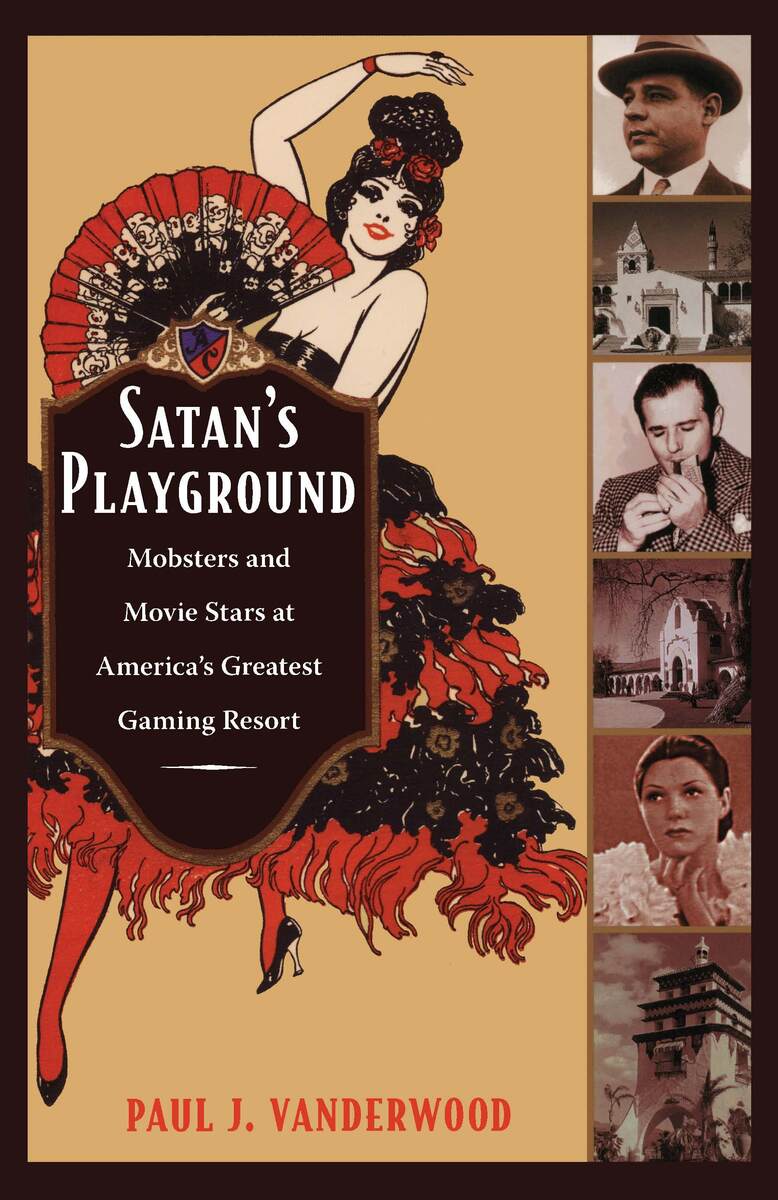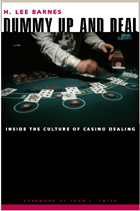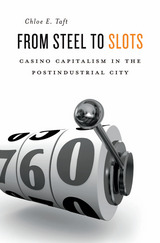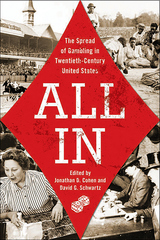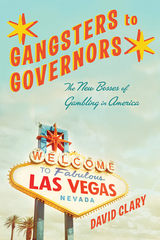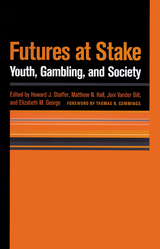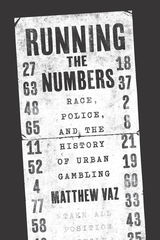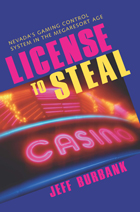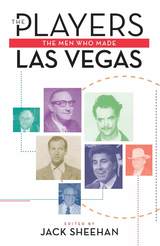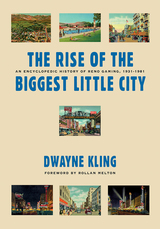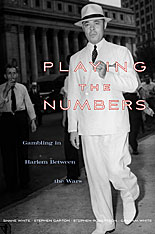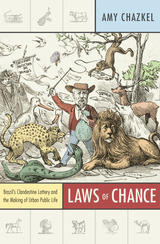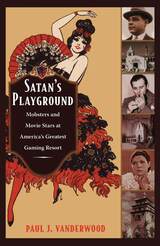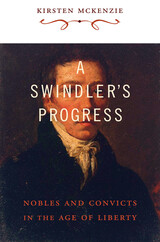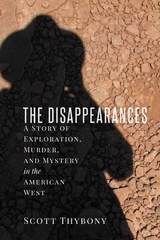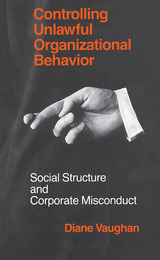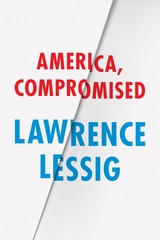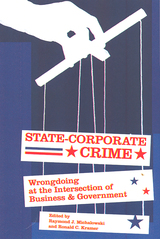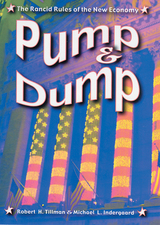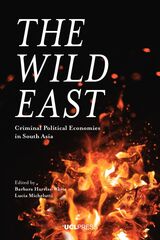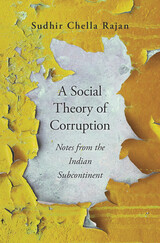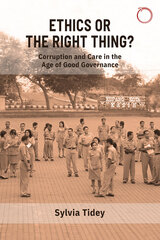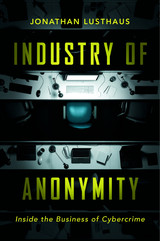“Vanderwood is a clean stylist as well as a history wonk, and the thorough portrait Satan’s Playground paints of its area and era works as both history and crime narrative.” - Michaelangelo Matos, The Onion AV Club
“From beginning to end of Satan’s Playground, Vanderwood follows a gangland-style heist and its repercussions, especially for the thugs who pulled it off. . . . The heist, the capture of the hijackers, their trial, and their ultimate fate are skillfully narrated.” - Joe Deegan, San Diego Reader
“Drawing on newspaper accounts, police files, court records, personal memoirs, oral histories, and ‘true detective’ magazines, [Vanderwood] presents a fascinating portrait of vice and society in the Jazz Age, and he makes a significant contribution to the history of the U.S.-Mexico Border. . . . Satan's Playground is a truly fascinating book of historic importance that I highly recommend.” - Dennis Moore, East County Magazine
“Vanderwood has filled a gaping hole in the professional borderlands literature, not only setting the record straight about Agua Caliente itself, but also capturing in the process much of the fascinating (anti)social history and character of the greater region during this transformative period. . . . Satan’s Playground is a first-class piece of research and an absolute must-read for readers with interests in the borderlands, Tijuana and San Diego, and the Prohibition era.” - James R. Curtis, Southwestern Historical Quarterly
“This book is an excellent example of how local history can illuminate transnational history and culture. . . . [An] insightful and well-illustrated study of how cross-border tourism at Tijuana and Agua Caliente promoted the growing symbiotic relationship between Southern California and Baja and how Agua Caliente served as an inspiration for later American gambling resorts in Las Vegas and elsewhere.” - Eugene P. Moehring, Pacific Historical Review
“In Satan’s Playground, Paul J. Vanderwood tells several stories at once, lovingly, in splendid detail, and with a wonderful sense of pacing. He combines biography, urban history, and crime narrative in a unique blend of elements to produce a robust and fascinating social history of gambling and other sorts of vice (bootlegging, prostitution, political corruption) in a particularly volatile and colorful area of the world, the U.S.-Mexico border around Tijuana, during the Jazz Age.”—Eric Van Young, author of The Other Rebellion: Popular Violence, Ideology, and the Mexican Struggle for Independence, 1810-1821
"Paul J. Vanderwood is the master. I have come to him for guidance both as a scholar and as a writer/historian more than once. I think, if the truth be told, we all steal from him. This is a fascinating book with Dr. Vanderwood’s usual insight and brio. I found it delightful."—Luis Alberto Urrea, author of The Hummingbird’s Daughter
“Hot-blooded history of a hedonistic Jazz Age resort where celebrity and mob culture mingled within gawking distance of the sensation-seeking masses. . . . Charmingly full of life. . . .”
-- Kirkus Reviews
“Like any good gangster tale, the story begins with a heist, shoot-out, and getaway; it follows the police, press, and private detectives as they close in on the culprits; and it ends with the robbers dead or behind bars. Along the way, Vanderwood supplies us with an extraordinarily rich history of the wheelers and dealers that shaped the San Diego–Tijuana nexus in the boom and bust years between the world wars. . . . It will no doubt be a mainstay of undergraduate and graduate classes on California, Western, and borderlands history for years to come.”
-- Robert M. Buffington Hispanic American Historical Review
“Drawing on newspaper accounts, police files, court records, personal memoirs, oral histories, and ‘true detective’ magazines, [Vanderwood] presents a fascinating portrait of vice and society in the Jazz Age, and he makes a significant contribution to the history of the U.S.-Mexico Border. . . . Satan's Playground is a truly fascinating book of historic importance that I highly recommend.”
-- Dennis Moore East County Magazine
“From beginning to end of Satan’s Playground, Vanderwood follows a gangland-style heist and its repercussions, especially for the thugs who pulled it off. . . . The heist, the capture of the hijackers, their trial, and their ultimate fate are skillfully narrated.”
-- Joe Deegan San Diego Reader
“This book is an excellent example of how local history can illuminate transnational history and culture. . . . [An] insightful and well-illustrated study of how cross-border tourism at Tijuana and Agua Caliente promoted the growing symbiotic relationship between Southern California and Baja and how Agua Caliente served as an inspiration for later American gambling resorts in Las Vegas and elsewhere.”
-- Eugene P. Moehring Pacific Historical Review
“Vanderwood has filled a gaping hole in the professional borderlands literature, not only setting the record straight about Agua Caliente itself, but also capturing in the process much of the fascinating (anti)social history and character of the greater region during this transformative period. . . . Satan’s Playground is a first-class piece of research and an absolute must-read for readers with interests in the borderlands, Tijuana and San Diego, and the Prohibition era.”
-- James R. Curtis Southwestern Historical Quarterly
“Vanderwood is a clean stylist as well as a history wonk, and the thorough portrait Satan’s Playground paints of its area and era works as both history and crime narrative.”
-- Michaelangelo Matos The Onion AV Club
